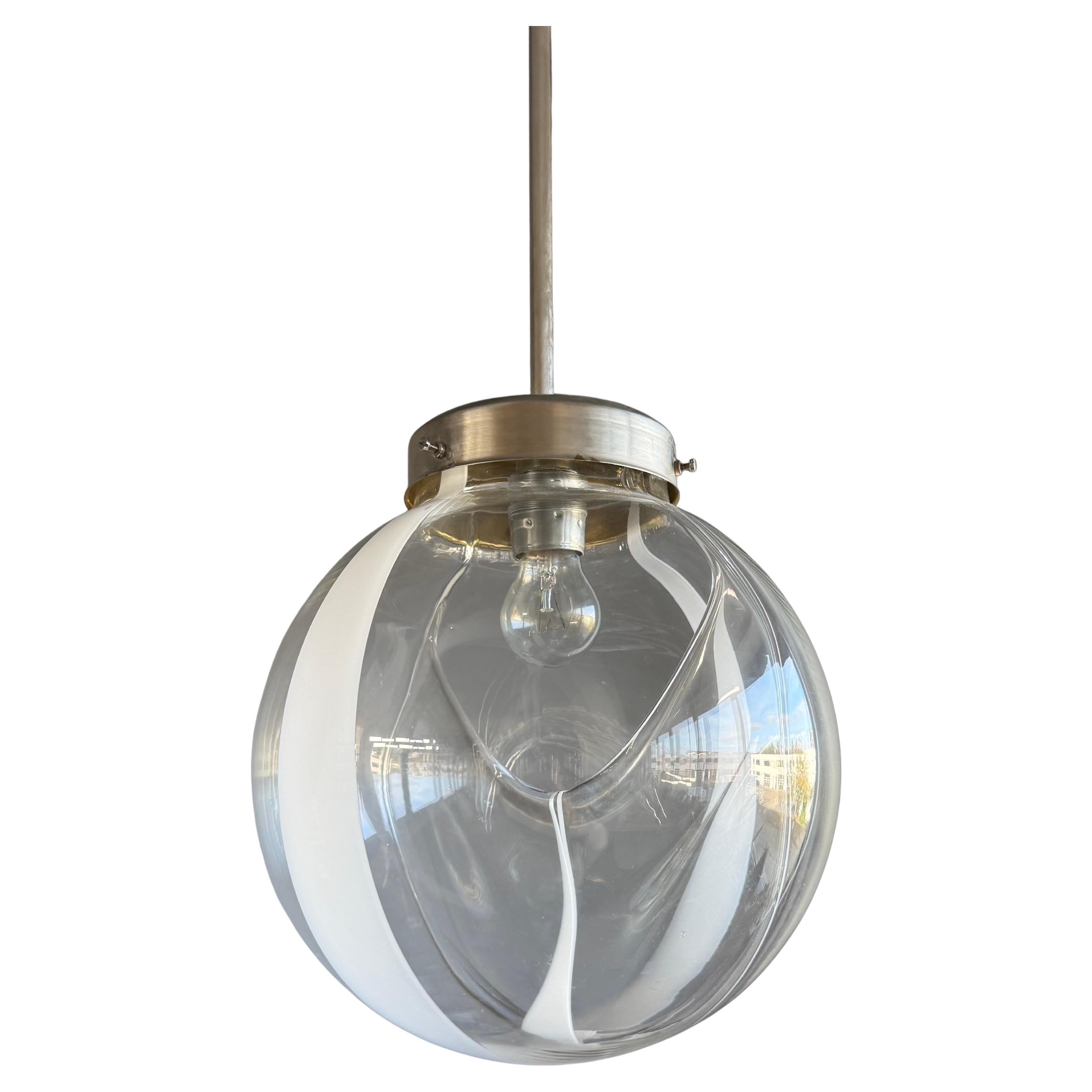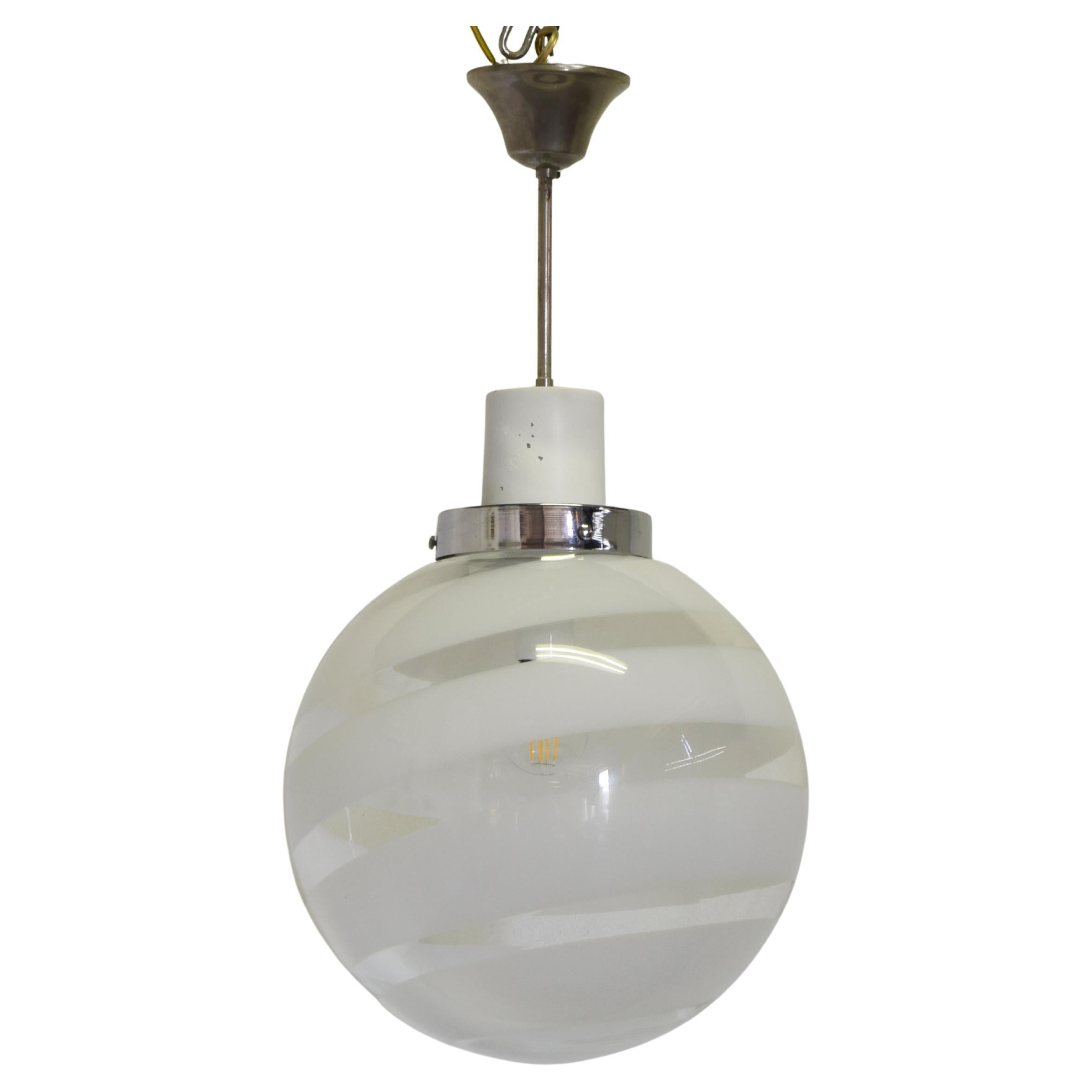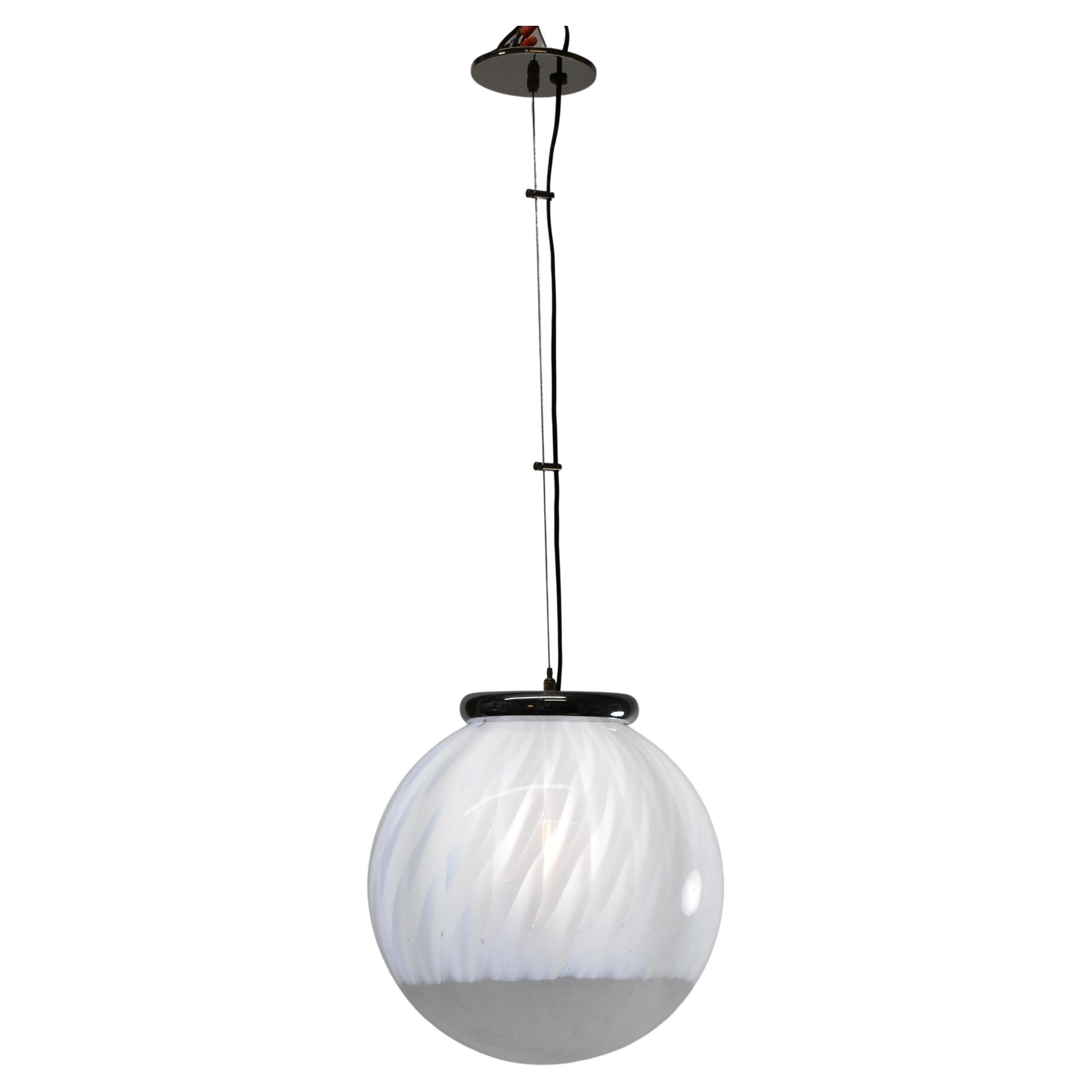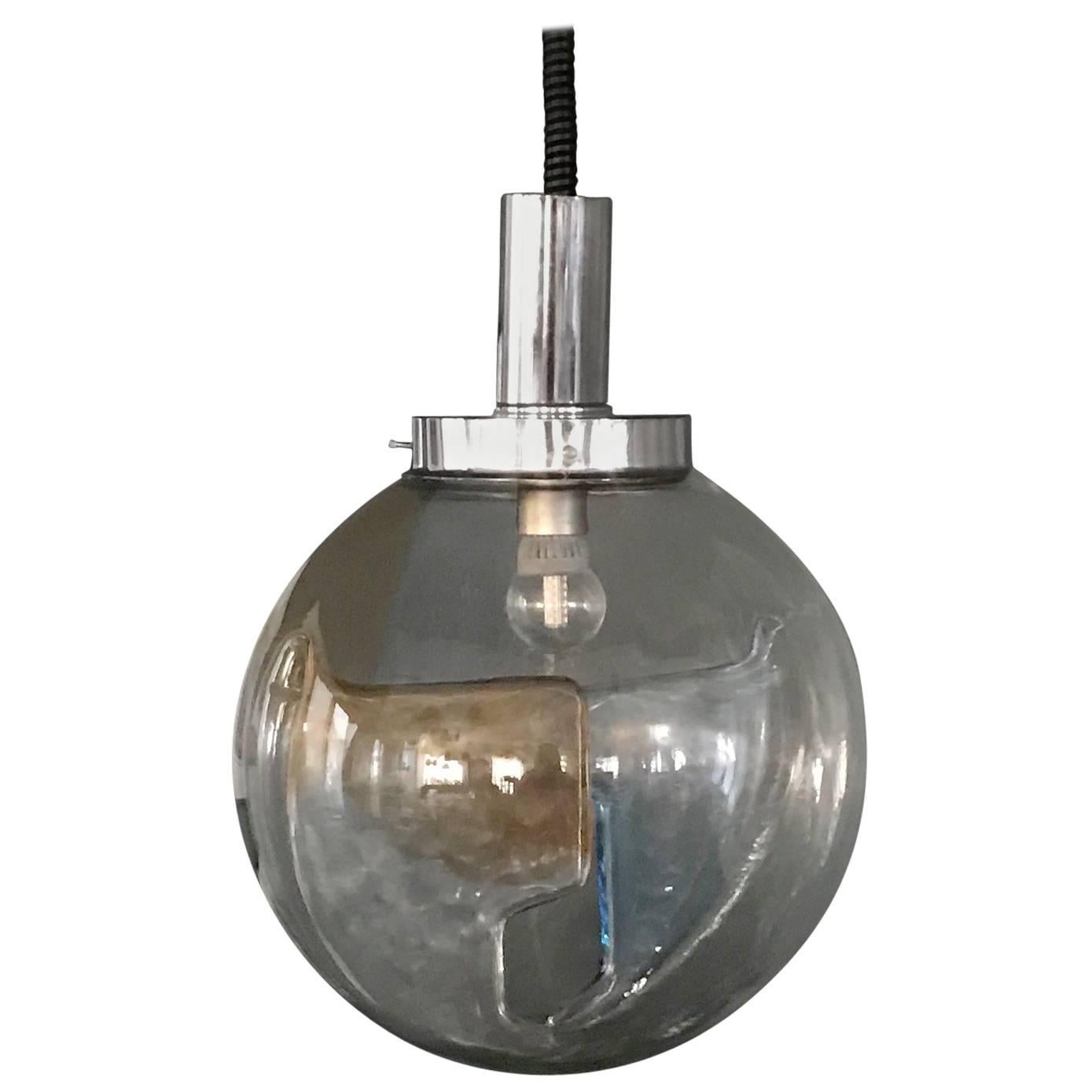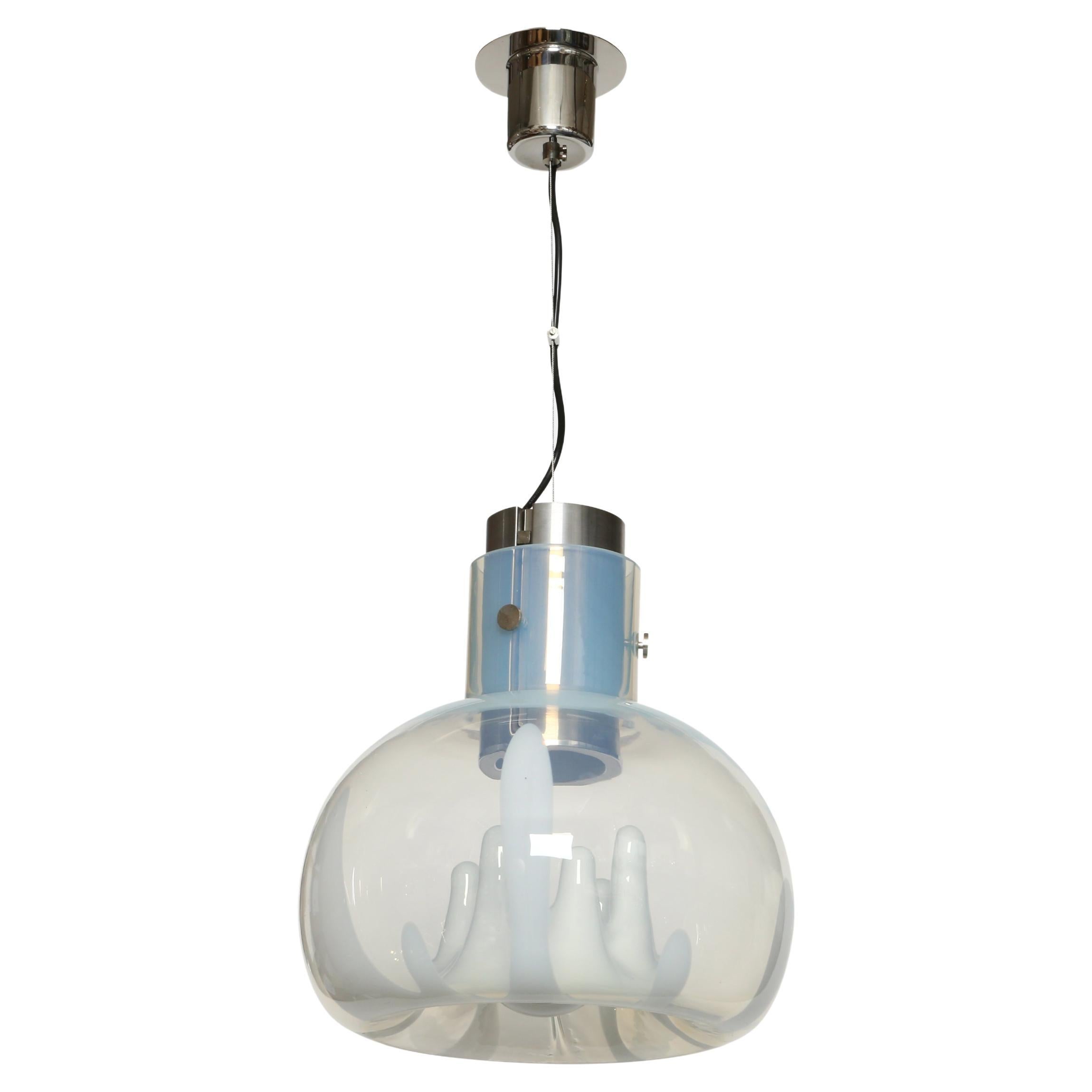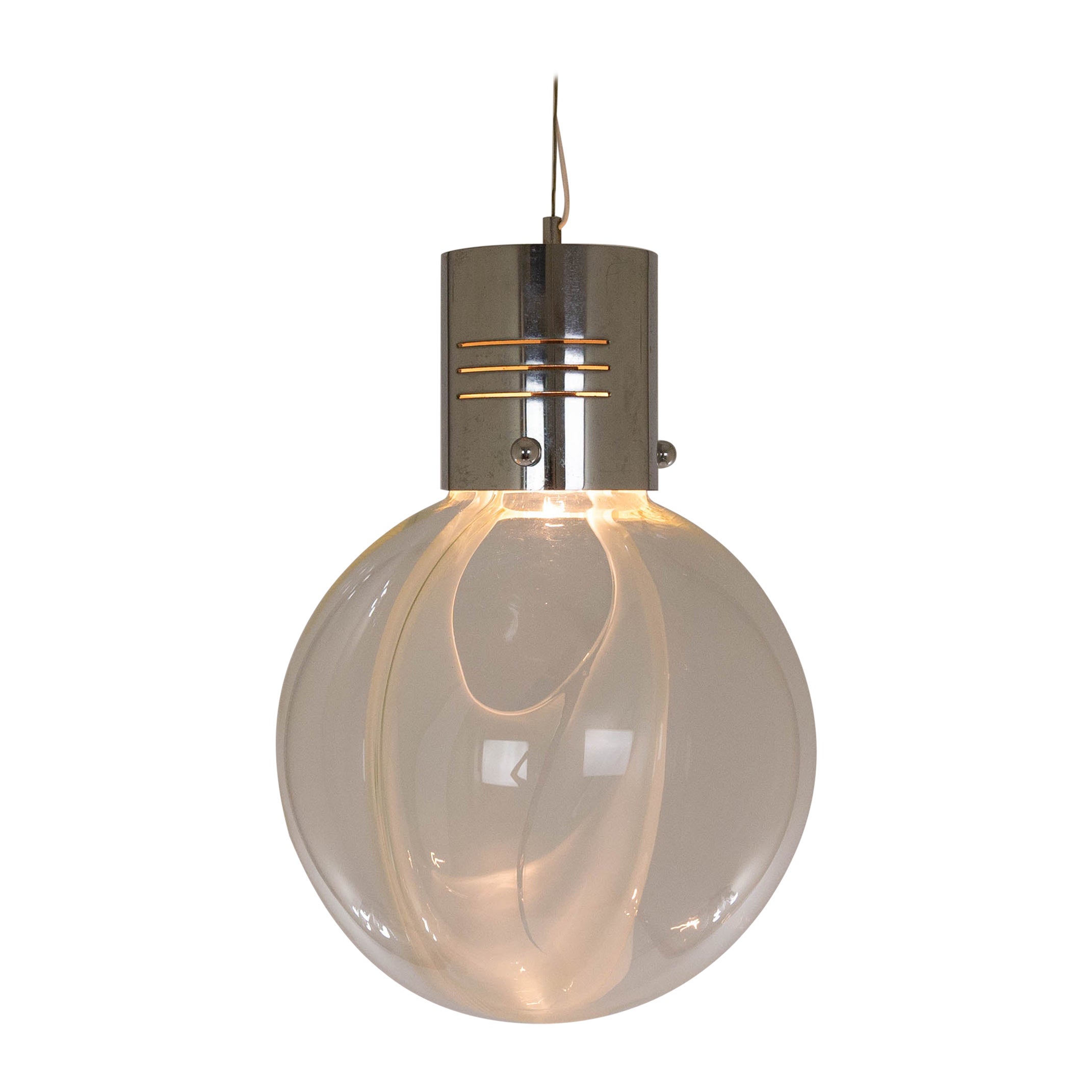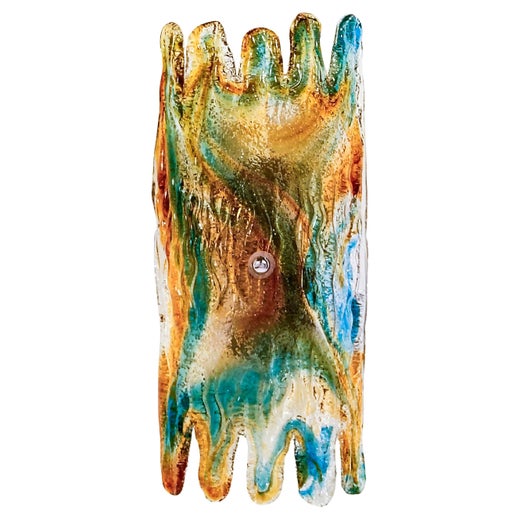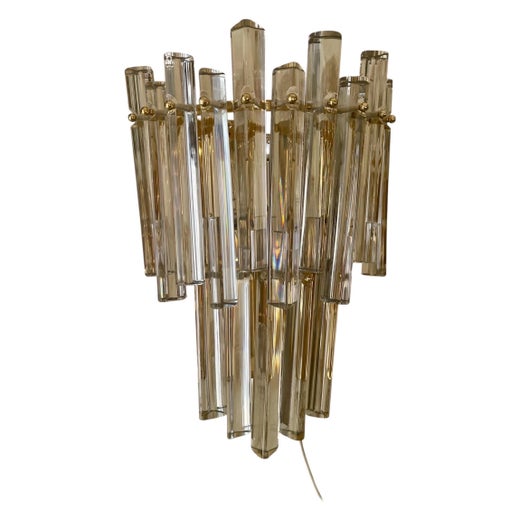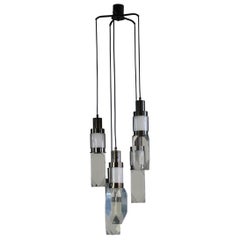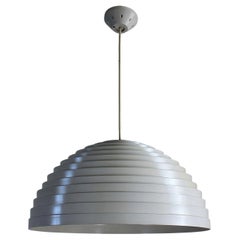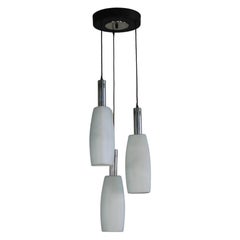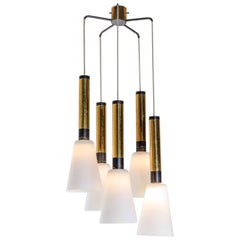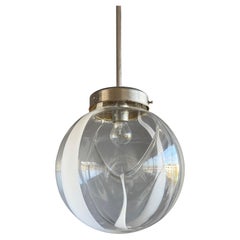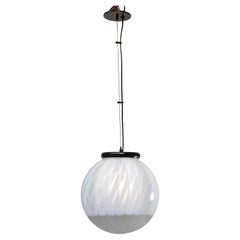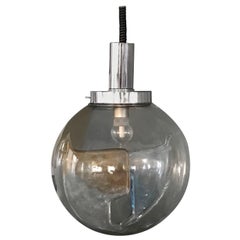Toni Zuccheri Membrana Ceiling Lamp in Murano Glass by Venini 1960s Italy
About the Item
- Creator:Venini (Manufacturer),Toni Zuccheri (Designer)
- Dimensions:Height: 33.86 in (86 cm)Diameter: 14.18 in (36 cm)
- Power Source:Hardwired
- Lampshade:Included
- Style:Mid-Century Modern (Of the Period)
- Materials and Techniques:
- Place of Origin:
- Period:
- Date of Manufacture:1960s
- Condition:Wear consistent with age and use.
- Seller Location:Montecatini Terme, IT
- Reference Number:1stDibs: LU5304228089632
Toni Zuccheri
Italian glassmaker and master Murano craftsman Toni Zuccheri’s lifelong passion for nature and animals contributed to the development of some of the finest modernist works in Murano glass history. His mid-century-era chandeliers, wall sconces, table lamps and vases showcase his penchant for experimentation and exceptional skill in color and form.
Zuccheri was born in 1936 in San Vito al Tagliamento. His father was Luigi Zuccheri (1904–74), a renowned painter known for his depictions of animals (and friend of artist Giorgio De Chirico). Toni not only inherited his father’s love of the animal kingdom — particularly birds — but also his artistic talents, demonstrating an intuitive skill for drawing at an early age.
In 1945, the Zuccheri family moved to Venice. At the city’s University Institute of Architecture, Toni studied under esteemed Italian architects Franco Albini, Ignazio Gardella and Carlo Scarpa.
During the early 1960s, Zuccheri focused on the art of glassmaking and collaborated with Venini. While working with the celebrated Italian Murano glass factory, he developed an innovative type of thick window glass sheets called Vetrate Grosse with prolific Italian architect and furniture designer Gio Ponti. The glass was made of dense, vitreous pastes mixed with murrine, raw pigment, shards of filigrana cane and fine wire mesh.
Zuccheri exhibited a group of elaborate bird and farm animal sculptures at the 1964 Venice Biennale. The birds, which were accented with gold leaf, included vibrantly hued guinea fowl-shaped works with murrine bodies, turkeys, owls and hoopoes (colorful birds known for their crown of feathers). Zuccheri employed an ingenious glass layering technique to create the birds’ feathers, while their realistic-looking legs and feet were made of bronze.
Throughout his career, Zuccheri’s love of birds and animals was a recurring theme in many of his glassworks, which he created for Venini and other Italian Murano glass manufacturers such as VeArt and Barovier & Toso. Today, his work lives on in galleries and private collections worldwide.
On 1stDibs, discover a range of vintage Toni Zuccheri lighting, decorative objects and serveware.
Venini
Beginning in the 1930s — and throughout the postwar years especially — Venini & Co. played a leading role in the revival of Italy’s high-end glass industry, pairing innovative modernist designers with the skilled artisans who created extraordinary chandeliers, sconces and other lighting in the centuries-old glass workshops on the Venetian island of Murano.
While the company’s co-founder, Paolo Venini (1895–1959), was himself a highly talented glassware designer, his true genius was to invite forward-thinking Italian and international designers to Murano’s hallowed workshops to create Venini pieces — among them Gio Ponti, Massimo Vignelli, Finnish designer Tapio Wirkkala, Thomas Stearns of the United States and Fulvio Bianconi.
Paolo Venini trained and practiced as a lawyer for a time, though his family had been involved with glassmaking for generations. After initially buying a share in a Venetian glass firm — he and antiques dealer Giacomo Cappellin established Vetri Soffiati Cappellin Venini & C. in 1921 — Venini took over the company as his own in 1925, and under his direction, it produced mainly classical Baroque designs.
In 1932, Venini hired the young Carlo Scarpa— who would later distinguish himself as an architect — as his lead designer. Scarpa, working in concert with practiced glass artisans, completely modernized Venini, introducing simple, pared-down forms; bright primary colors; and bold patterns such as stripes, banding and abstract compositions that utilized cross sections of murrine (glass rods).
Paolo Venini’s best designs are thought to be his two-color Clessidre hourglasses, produced from 1957 onward, and the Fazzoletto (“handkerchief”) vase, designed with Bianconi in 1949. Bianconi’s masterworks are considered by many to be his Pezzato works — colorful vases with patterns that resemble those of a patchwork quilt.
Other noteworthy and highly collectible vintage Venini works include Ponti’s dual-tone stoppered bottles (circa 1948); rare glass sculptures from the Doge series by Stearns, the first American to design for the firm; Vignelli’s striped lanterns of the 1960s; the Occhi vases with eyelet-shaped patterns by Tobia Scarpa (son of Carlo); and, with their almost zen purity, the Bolle (“bubbles”) bottles designed by Wirkkala in 1968.
With these works — and many others by some of the creative titans of the 20th and 21st centuries — Venini has produced one of the truly great bodies of work in modern design.
Find antique and vintage Venini chandeliers, serveware, table lamps, decorative objects and other furniture on 1stDibs.
- ShippingRetrieving quote...Shipping from: Florence, Italy
- Return Policy
More From This Seller
View AllVintage 1970s Italian Mid-Century Modern Chandeliers and Pendants
Metal
Vintage 1970s Italian Post-Modern Chandeliers and Pendants
Metal
Vintage 1970s Italian Mid-Century Modern Chandeliers and Pendants
Metal
Vintage 1960s Italian Mid-Century Modern Chandeliers and Pendants
Brass, Metal
Vintage 1960s Italian Mid-Century Modern Chandeliers and Pendants
Brass
Vintage 1960s Italian Mid-Century Modern Chandeliers and Pendants
Brass, Nickel
You May Also Like
Mid-20th Century Italian Mid-Century Modern Chandeliers and Pendants
Wire, Metal, Nickel
Vintage 1950s Italian Mid-Century Modern Chandeliers and Pendants
Murano Glass
Mid-20th Century Modern Chandeliers and Pendants
Glass
Mid-20th Century Italian Mid-Century Modern Chandeliers and Pendants
Blown Glass
Vintage 1960s Italian Mid-Century Modern Chandeliers and Pendants
Metal
Vintage 1960s Italian Mid-Century Modern Chandeliers and Pendants
Metal
